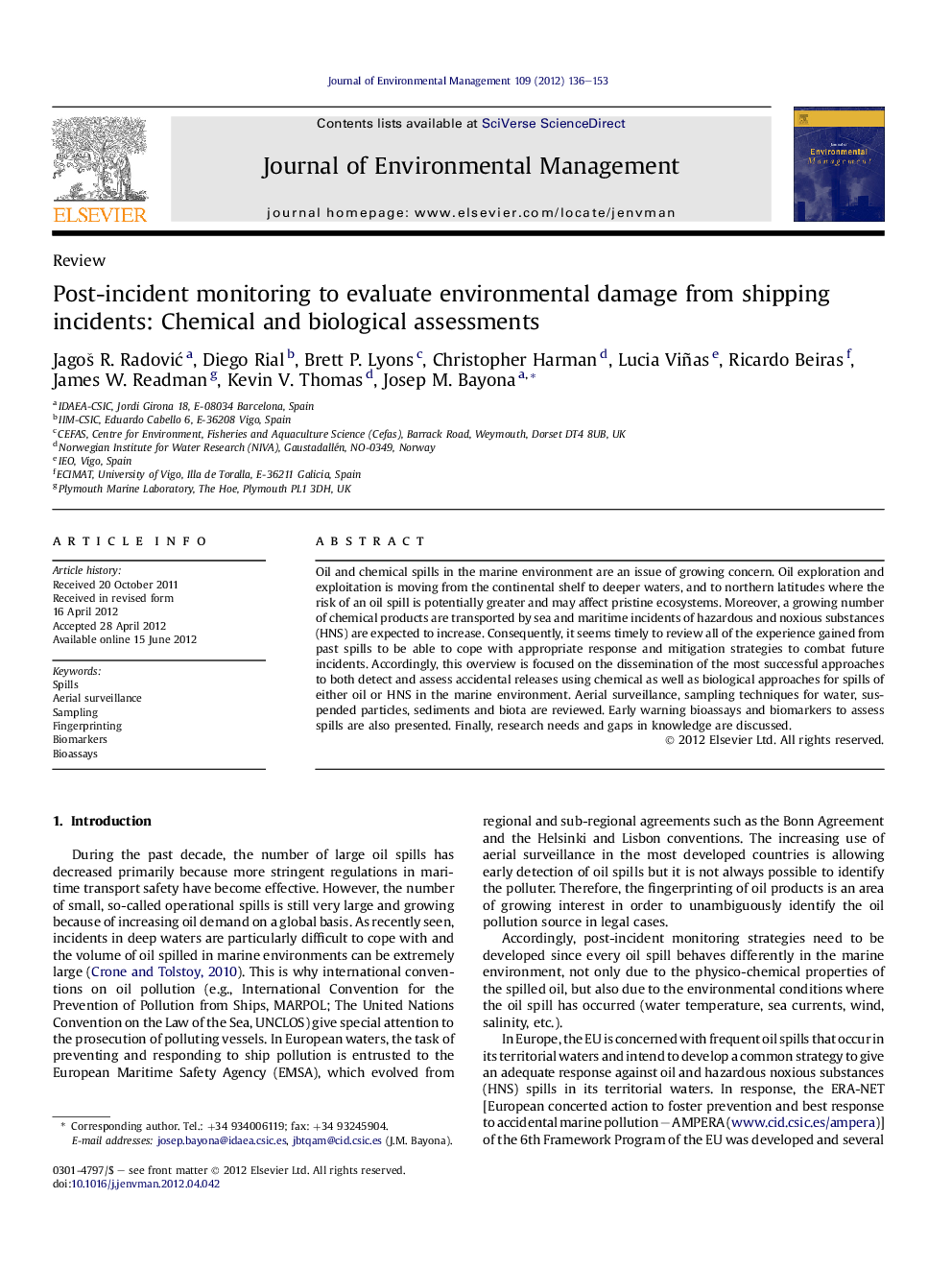| Article ID | Journal | Published Year | Pages | File Type |
|---|---|---|---|---|
| 1056490 | Journal of Environmental Management | 2012 | 18 Pages |
Oil and chemical spills in the marine environment are an issue of growing concern. Oil exploration and exploitation is moving from the continental shelf to deeper waters, and to northern latitudes where the risk of an oil spill is potentially greater and may affect pristine ecosystems. Moreover, a growing number of chemical products are transported by sea and maritime incidents of hazardous and noxious substances (HNS) are expected to increase. Consequently, it seems timely to review all of the experience gained from past spills to be able to cope with appropriate response and mitigation strategies to combat future incidents. Accordingly, this overview is focused on the dissemination of the most successful approaches to both detect and assess accidental releases using chemical as well as biological approaches for spills of either oil or HNS in the marine environment. Aerial surveillance, sampling techniques for water, suspended particles, sediments and biota are reviewed. Early warning bioassays and biomarkers to assess spills are also presented. Finally, research needs and gaps in knowledge are discussed.
► Satelite operated systems are useful for early oil spill detection by SARs. ► HNS (chemical) spills strategies need to be addressed case-by-case. ► Passive sampling devices are useful for oil spill monitoring. ► Fingerprinting allows not only to assess the source but also weathering processes. ► A battery of bioassays and biomarkers is extremely useful in post-incident monitoring.
